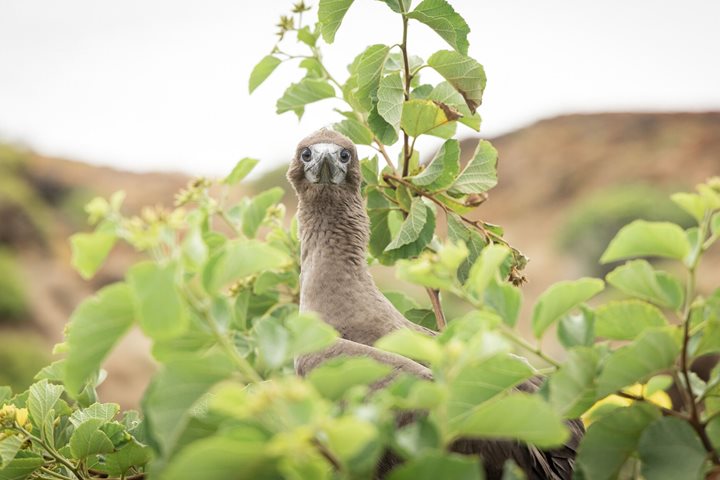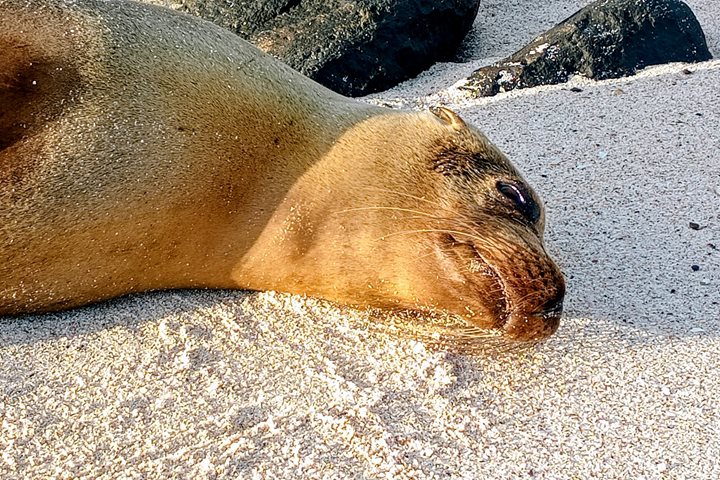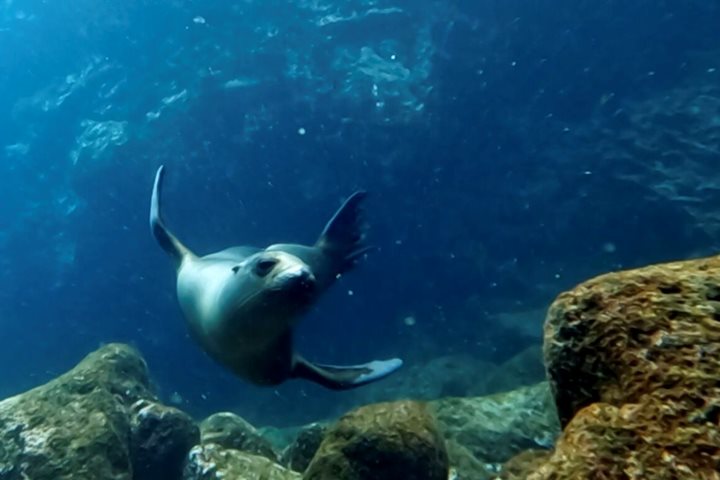Early in the morning, after a long navigation from Rabida Island, we arrived at the western part of the Galapagos, where the youngest islands, Fernandina and Isabela, are found. First called Albemarle and Marlborough islands, they were rechristened with Spanish names in 1892, when we commemorated the 400th anniversary of the discovery of the Americas by Europeans.
We started our day exploring the calm seas west of Isabela in search of marine life. Heading south, the dramatic landscape was anchored by the gigantic Ecuador Volcano and its huge lava flows. After breakfast we boarded Zodiacs to visit Punta Vicente Roca on Isabela Island. Along the colorful vertical cliffs, we spotted two flightless birds that dwell in the archipelago, Galapagos penguins and the flightless cormorants, standing on rocks.
At the end of the bay, green sea turtles delighted our guests due to their tameness when they approached our Zodiacs. On the rocks, fur seals and Galapagos sea lions rested pleasantly while some marine iguanas walked on their bodies. All these amazing creatures inhabit this place due to the nutrient-rich waters. To finish this incredible morning, we snorkeled with Galapagos penguins, sea turtles, cormorants, stingrays, and many schools of colorful fish.
In the afternoon, we headed west to visit Punta Espinoza on Fernandina Island, home to many endemic species and one of the most active volcanoes in the world, Volcan La Cumbre. We set foot on the small landing dock that led to the beginning of the trail. On nearby mangroves, we spotted two Galapagos hawks. Walking along the lava field were hundreds of large marine iguanas. We observed this endemic reptile everywhere, covering large areas of the path to bask under the sun. When they secrete salt out of their nostrils, they produce an unmistakable noise which we heard throughout our visit.
We observed many flightless cormorants, making their nests, collecting some seaweed, or drying out their stumpy wings. A Galapagos hawk we previously observed approached the iguanas attentively, as if selecting the best prey. Some iguanas headed to the ocean to feed while on the beach, Galapagos sea lions rested indifferently. Afterward, we returned to the ship to enjoy a beautiful sunset from the upper deck, remembering how beautiful this day was in this natural paradise called Galapagos.







